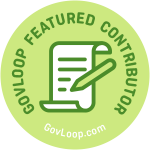 If asked to define innovation, one may describe it as a collection of ideas happened upon through organized chaos, by the selectively gifted.
If asked to define innovation, one may describe it as a collection of ideas happened upon through organized chaos, by the selectively gifted.
Innovation, or creativity, is often seen as an intangible stroke of luck: either you have it or you don’t. However; did you know that it is possible to learn to be more creative? Dr. Roger Firestien once said: “Learning how to be deliberately creative is a skill. It’s a skill that you can apply immediately.”
Firestien, Senior Faculty member at the International Center for Studies in Creativity at SUNY Buffalo State, and President of Innovation Resources, Inc., suggests a 3-step, pragmatic approach to fostering innovative environments that transcend industry: identifying the vision, identifying barriers, and brainstorming contingencies.
Identify the Vision
It should be noted that a company mission statement is much different than its vision. Oftentimes, vision and mission statements are used interchangeably, and they shouldn’t be. While a mission statement defines the what and who of an agency, the vision addresses why and how. As an agency changes, so might its objectives and goals. As such, its vision should be revised as needed to reflect the changing agency culture.
Consider inviting key staff to an agency vision workshop. Create an environment for brainstorming and sharing ideas, to assist you with answering questions about the direction of your organization.
Some questions to consider when revising your vision:
- What problem does my agency intend to solve?
- What changes do I believe my organization can affect?
- What are the greatest strengths of my organization?
Identify Potential Barriers
Upon establishing your vision, identify all potential barriers that could prevent you from accomplishing it. Barriers can present both structurally and behaviorally. Structural barriers include silos, internal systems, or processes that are either redundant or outdated. The absence of Standard Operating Procedures (SOPs), or an agreed upon approach to utilizing certain tools is yet another barrier to establishing a clear vision for an organization.
Behavioral barriers can include a misunderstanding of priorities, leading to a lowered sense of urgency. Unfortunately, this challenge plagues many organizations. Inconsistency in messaging/communication is also an impediment to properly developing a clear vision; when different people are hearing different things, eventually they disengage. Confusion dilutes the authenticity of the message.
Some questions to consider when addressing potential barriers:
- Do we have the right people involved?
- What resources do we have to implement and maintain this vision?
- What are our current processes? Are we reinventing the wheel?
Brainstorm
Once you’ve established your vision, and identified the potential barriers, create a space for brainstorming. Although you want to keep it informal, you should still apply a method to the madness – formally informal. There are countless activities the illicit creativity and innovation. Additionally, you may find that you’ll need to offer more than one brainstorming session before carrying out your vision, so be prepared to schedule more sessions.
One common approach to brainstorming might the parking lot technique (although this is typically used for meetings, it can still apply to idea gathering/brainstorming). Another alternative could be Yes, And? This is actually an Improvisational technique, wherein an idea is presented, and the other person agrees and adds to it. The key to a successful brainstorming session is to gather, and allow all ideas to be heard.
Some questions to consider during brainstorming sessions:
- How would it look if we achieved our vision?
- Who will help us get there?
- How will we remain cutting edge?
Perhaps innovation is indeed a collection of ideas, happened upon through organized chaos. However, nevertheless, it is possible to learn to be more creative. Moreover, it is also possible to foster innovation and creativity among teams. For additional information on brainstorming and cultivating innovation, see the following:
Questions you should ask when brainstorming project ideas
Video – Learning to be Innovative: Creating Breakthroughs in your organization
Hope Marshall is part of the GovLoop Featured Contributor program, where we feature articles by government voices from all across the country (and world!). To see more Featured Contributor posts, click here.





This is great insight. Once I read, “did you know it’s possible to learn to be more creative?” I had to keep reading. I really learned a lot about innovation and creativity among teams.
Thank you, Kaitlin! So much can come from coordinating brainstorming sessions. Especially when people feel comfortable enough to share their ideas. Everyone has something to contribute; it’s just a matter of folks finding their niche, and seeing how they can contribute!
Excellent blog, thanks! I love the quote you used. “Learning how to be deliberately creative is a skill. It’s a skill that you can apply immediately.”
Thank you so much! Creativity can be a tricky thing to try and implement, especially within the government. But there are still opportunities to enhance and improve what we can.